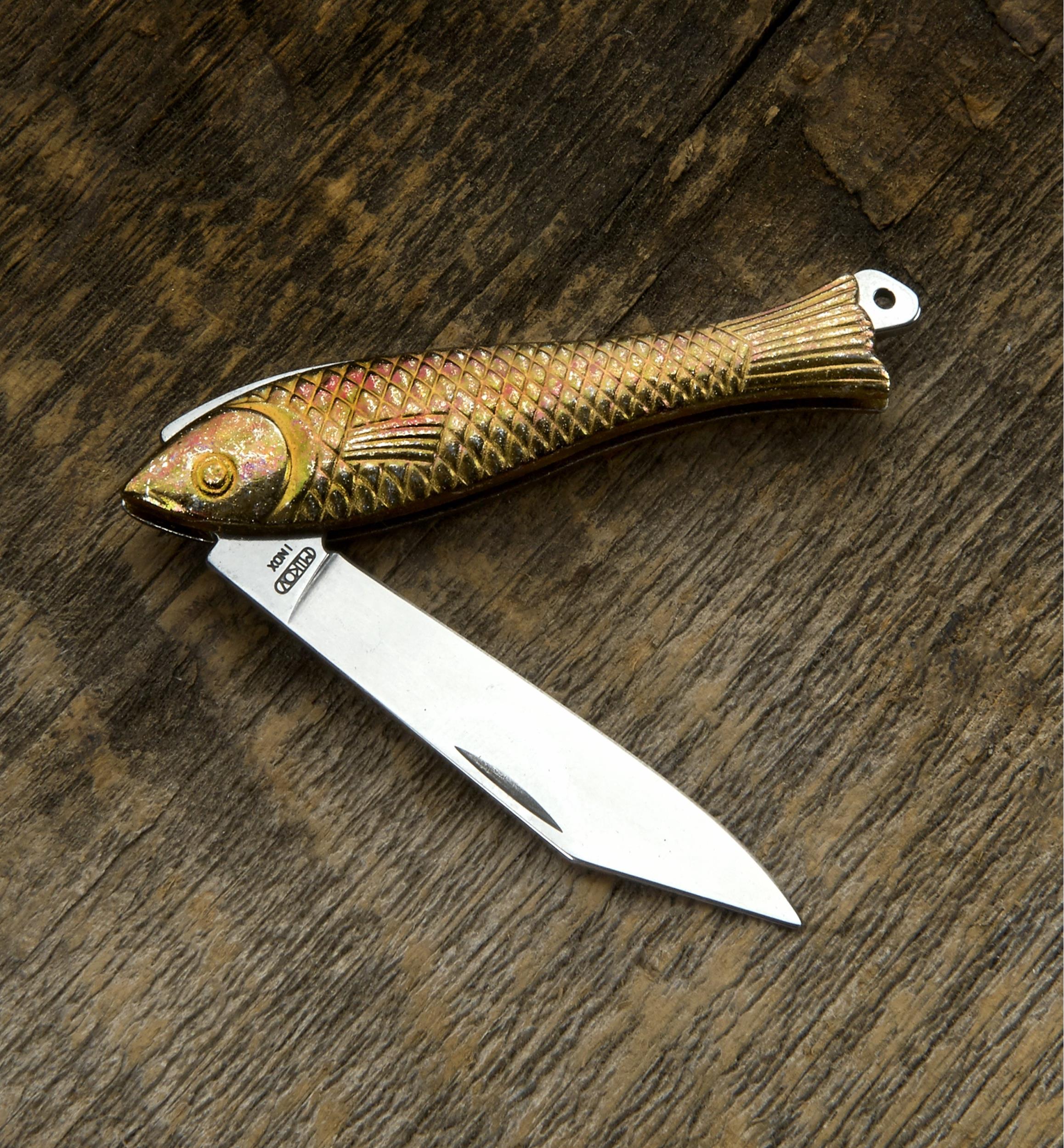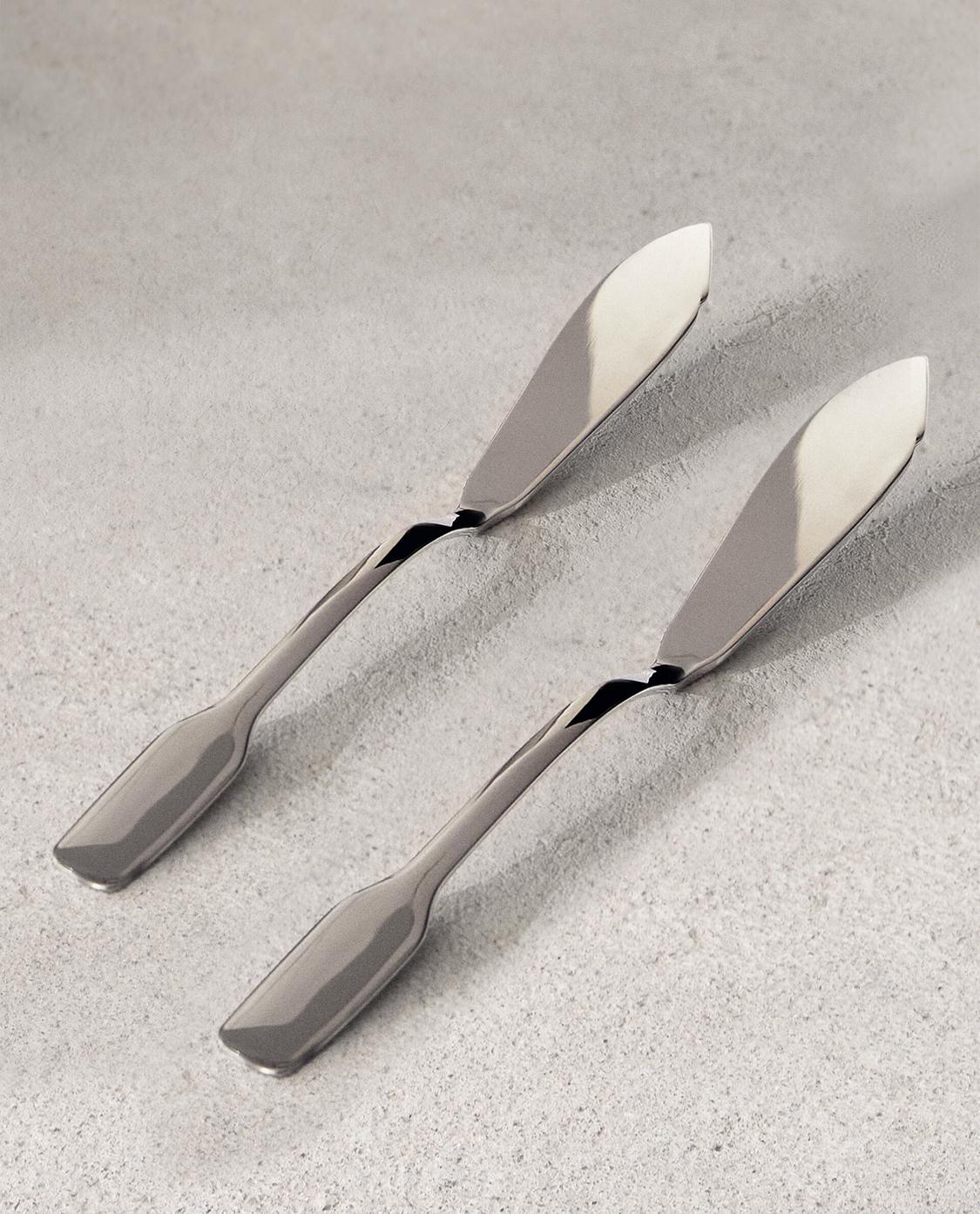Discover the Important Features to Search For in a Top-Quality Fish Knife
When selecting a fish knife, several key features require interest. The blade product considerably affects toughness and sharpness, while adaptability plays a vital duty in precision. In addition, the deal with layout influences convenience during prolonged usage. Side retention and safety and security features are additionally vital for practical use. Understanding these components will certainly guide consumers towards making an educated option, yet the nuances of their relevance may not be instantly clear.
Blade Product and Construction
The performance of a fish knife greatly rests on its blade product and building - fish knife. Top notch fish blades normally feature blades made from stainless-steel, high-carbon steel, or a combination of both. Stainless-steel is favored for its deterioration resistance and reduced maintenance, making it perfect for freshwater and deep sea atmospheres. High-carbon steel, while vulnerable to rusting, provides remarkable sharpness and edge retention, appealing to those who prioritize reducing efficiency
The construction of the blade also plays a crucial role in its efficiency. Full-tang blades, which extend the entire size of the handle, provide improved stamina and balance. On the other hand, partial-tang blades may compromise longevity. Additionally, the thickness of the blade ought to be thought about, as thinner blades enable much more specific cuts, necessary for fragile fish filleting. Inevitably, a sound blade, making use of the appropriate products, is basic for achieving the best results when preparing fish.
Blade Flexibility and Length
Blade versatility and length are critical factors that substantially affect the efficiency of a fish knife. A versatile blade enables specific cuts and the ability to steer around bones and skin, making it important for filleting fish effectively. The correct amount of adaptability can enhance control, enabling the individual to accomplish clean, smooth cuts with marginal effort.
In terms of length, fish blades typically vary from 6 to 9 inches. A longer blade is advantageous for larger fish, supplying the reach needed for efficient filleting. Conversely, a much shorter blade provides maneuverability, making it ideal for smaller fish or elaborate jobs.
Eventually, the choice of versatility and length need to straighten with the specific fishing needs and preferences of the user. A healthy combination of these attributes guarantees optimum efficiency, enhancing the general fish preparation experience.
Take Care Of Style and Convenience
A well-designed handle is crucial for making certain convenience and control when utilizing a fish knife. The take care of ought to fit firmly in the hand, permitting a firm grip throughout complex jobs such as filleting or skinning fish. Materials like rubber, wood, or composite supply various degrees of comfort and traction, affecting the customer's experience.
Ergonomic features are also critical; contours that comply with the all-natural form of the hand can reduce tiredness throughout prolonged use. Additionally, the manage's structure plays a significant duty in stopping slippage, specifically when working with wet hands.
Weight circulation is another element that contributes to the total equilibrium of the knife, boosting ability to move. A comfy manage layout not just enhances effectiveness yet likewise advertises safety and security, as a protected grip minimizes the risk of accidents (fish knife). Ultimately, a thoughtful handle style can considerably boost the performance of a fish knife in cooking applications
Edge Retention and Honing
While utilizing a fish knife, maintaining a sharp edge is essential for accomplishing clean cuts and accurate filleting. A quality fish knife should show excellent side retention, permitting it to remain check here sharp through multiple uses. This characteristic is usually identified by the sort of steel used in the blade; high-carbon stainless-steel is regularly favored as a result of its equilibrium of hardness and corrosion resistance.

Security Functions and Sheath Options
When choosing a fish knife, numerous safety and security attributes and sheath options are essential factors to consider. A safe and ergonomic handle minimizes the risk of slips during usage, improving individual safety. Distinctive holds and finger guards better stop accidents, enabling much better control while filleting fish.
Furthermore, a blunt idea can lessen the danger of leak injuries, making it a more secure choice for amateur customers.
Sheath choices additionally play a vital function in safety. A well-designed sheath safeguards the blade, avoiding unintended cuts when the knife is kept or carried. Sheaths made from durable materials, such as nylon or difficult plastic, deal included security against environmental elements.
Some sheaths include belt clips or loopholes, making certain the knife is conveniently accessible while remaining safe. Eventually, focusing on safety and security features and sheath alternatives adds significantly to the total performance and customer experience of a fish knife.
Frequently Asked Inquiries
What Is the most effective Brand Name for Fish Knives?
The most effective brand name for fish knives often differs by choice, yet popular names like Wüsthof, Victorinox, and Reject are regularly recommended for their sharpness, craftsmanship, and resilience, making them top selections among cooking enthusiasts and specialists alike.
Can Fish Knives Be Used for Various Other Kinds Of Fish?
Fish knives can certainly be made use of for various other sorts of fish. Their style and sharpness make them versatile sufficient for numerous fish varieties, enhancing the general experience of filleting and preparing different kinds of fish and shellfish.

Just how Do I Clean and Preserve My Fish Knife?
To preserve a fish and clean up knife, wash it with warm water after use, gently scrub with moderate soap, dry extensively, and store in a protective sheath to avoid damage and rust. Regular honing is vital.
Are There Fish Knives Especially for Left-Handed Users?
Yes, there are fish knives developed specifically for left-handed individuals. These blades feature reversed blade angles and ergonomic handles, making sure convenience and efficiency for left-handed individuals while filleting and preparing fish. Quality alternatives are offered from various makers.
What Is the Rate Array for High Quality Fish Knives?
Quality fish blades generally range from $20 to $150, relying on materials, brand track record, and craftsmanship. Higher-end options may feature exceptional comfort designs and customized styles, while budget-friendly options still use satisfying efficiency for laid-back individuals.
The efficiency of a fish knife mainly hinges on its blade product and building. High-grade fish knives normally include blades made from stainless steel, high-carbon steel, or a combination of both. Blade adaptability and size are essential variables that substantially influence the efficiency of a fish knife. Fish blades can certainly be made use of for other types of fish. These knives feature reversed blade angles and ergonomic manages, ensuring comfort and performance for left-handed individuals while filleting and preparing fish.